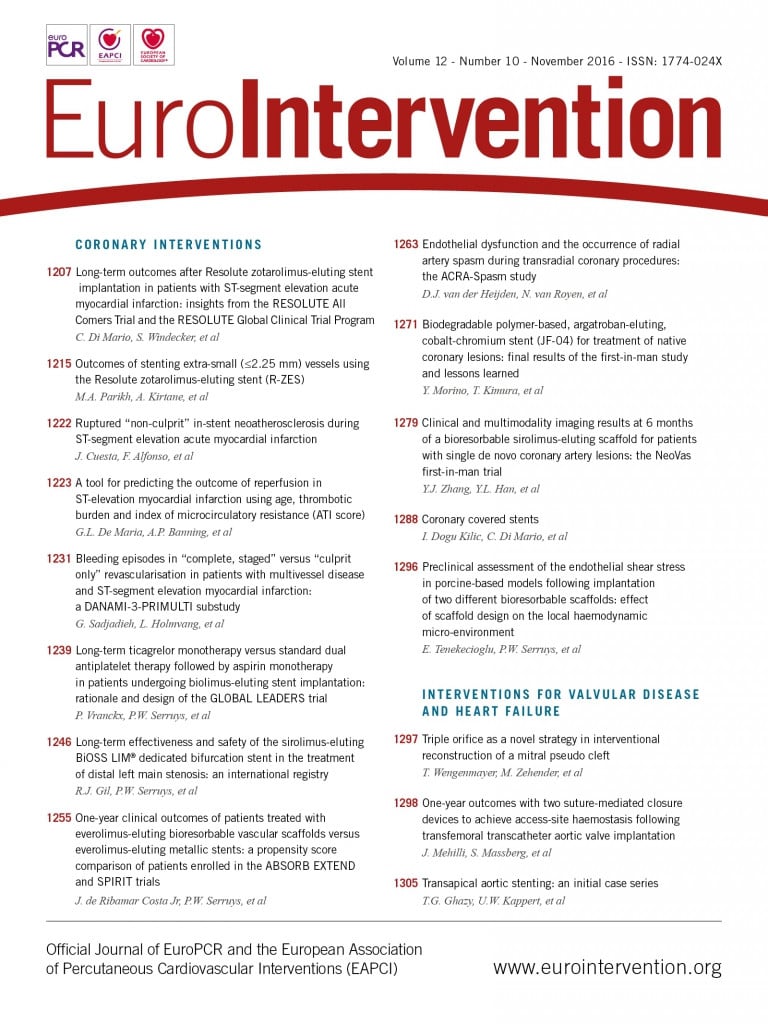

An 84-year-old male with a history of ischaemic cardiomyopathy was admitted with advanced NYHA Class IV symptoms. Transoesophageal echocardiography revealed a severe functional mitral regurgitation (MR) with a pseudo cleft in the P2 segment (Panel A, Panel B). Surgical repair was not possible due to his comorbidities (EuroSCORE 54.41%), thus an interventional approach using the MitraClip® system (Abbott Vascular, Santa Clara, CA, USA) was chosen by the Heart Team.
A clip was positioned in the A2/P2 region perpendicular to the commissure and lateral to the cleft, resulting in stabilisation of the cleft and reducing MR to moderate (Panel C, Panel D). The patient was discharged three days after the procedure with NYHA Class II symptoms.
Eighteen weeks later, the patient was re-admitted with severe dyspnoea. Echocardiography revealed moderate to severe MR (Panel D). Placing a second clip parallel to the first clip did lead to a significant reduction in mitral regurgitation but also caused an excessive rise of transmitral gradient. Therefore, we placed the second clip with a 45-degree angle to the first clip in order to create a triple orifice (Panel E). MR was reduced from moderate to severe to mild with a mean transmitral gradient of 5 mmHg (Panel F). Two days after the procedure, our patient was discharged with NYHA functional Class I.
To our knowledge, this is the first report of a MitraClip-induced triple orifice in a case of mitral pseudo cleft. By using the cleft itself as an orifice, mitral regurgitation could be effectively reduced without affecting the mean transmitral gradient (Moving image 1-Moving image 4).
Conflict of interest statement
The authors have no conflicts of interest to declare.
Supplementary data
Moving image 1. Atrial view prior to intervention (pseudo cleft in P2).
Moving image 2. Ventricular view prior to intervention (pseudo cleft in P2).
Moving image 3. Atrial view after 1st clip.
Moving image 4. Atrial view after 2nd clip.
Supplementary data
To read the full content of this article, please download the PDF.
Atrial view prior to intervention (pseudo cleft in P2).
Ventricular view prior to intervention (pseudo cleft in P2).
Atrial view after 1 clip.
Atrial view after 2 clip.

